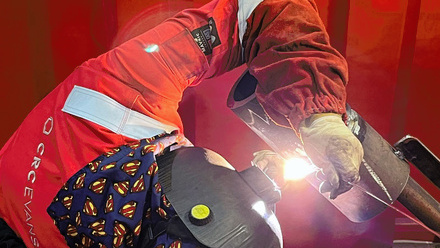Laying the foundation for materials success
The UK’s Henry Royce Institute has released its interim report as work progresses to develop a National Materials Innovation Strategy.

While materials underpin the UK’s manufacturing base – one of the largest in the world – the materials themselves pose a particular challenge in terms of a focused national effort, because their role is so pervasive. Further they link into a multitude of other sector strategies that depend on their continual innovation. And as the requirement and demands of new and more sustainable materials continue to rise across sectors such as civil engineering, energy, transport and healthcare, the market potential for new materials will only expand.
This highlights the urgency to progress work on a National Materials Innovation Strategy that we started last year.
This strategy, which will set out a 10-year vision, is designed to ensure that materials are clearly positioned as a strategic sector in their own right, as well as critical drivers of innovation across a range of important technologies.
The strategy will ensure that companies with a UK operation can continue to play a key role in rapidly expanding, global, materials markets, which currently generate turnover of £1trln.
Past efforts to bring such cohesion to materials innovation activities have often centred on sectors and have not always considered the synergies between industries and national policy drivers.
At this half-way point in the development of a strategy, we are publishing an Interim Report, which is the output of a distinct approach and is therefore delivering a very different perspective. We’ve worked particularly hard to break down the barriers between sectors, so that this strategy sets out recommendations that are viable right across the economy.
At this stage, we are particularly pleased to present refreshed and comprehensive econometric output. This is telling us that there are over 2,500 companies in the UK active in materials innovation, contributing just under £45bln to the UK economy – almost a quarter of the total contribution from manufacturing.
Seventy per cent of those companies have registered offices outside of London and the South East, and combined they employ more than 635,000 people.
Interestingly, and perhaps unsurprisingly, around three-quarters of these are small businesses – and of course there are also a good number of large businesses operating in this space, which account for 10% of those identified.
All this new data highlights the importance of the work in developing national coherency to provide focus to future opportunities. It will support the business case for implementing the final strategy’s key recommendations, which will include funding support to commercialise materials, the development of investment vehicles, greater incentives for companies to invest in materials innovation and support for skills programmes. The report will also highlight any substantial gaps in national infrastructure such as for scale-up or verification.
Under the direction of the industry-led Materials Innovation Leadership Group, this deep-dive work is already identifying high-potential areas where materials innovation will create significant value while also addressing national priorities – from getting to net-zero and rebalancing the UK economy, to supporting national resilience and enabling healthy lives.
This Interim Report encapsulates the materials challenges with input from 1,200 innovators spanning a wide range of strategic industries. Using a robust framework, it has systematically prioritised, developed and articulated the cross-sector innovation enablers, and the key opportunities that will deliver results for industry and the UK.
Through workshops and consultations, we have developed what we are calling ‘cross-over themes’ that set out trends and drivers across the whole materials sector, as well as ‘core themes’ that encapsulate key applications to which materials innovation can contribute via value-creation opportunities.
Cross-over themes that have emerged, perhaps not surprisingly, centre around materials for sustainability; Materials 4.0 to accelerate materials discovery; skills and education; materials for national and supply chain resilience; manufacturing and scale-up capabilities; and the necessary regulations and standards to enable innovation.
The core themes are: energy materials, soft materials, biocompatible materials, structural materials, materials for surface enhancement, and materials for electronics, telecoms, sensing and computing technologies.
Thirty opportunity workstreams have been identified across these core theme headings, and we are now convening experts for a deeper exploration of materials innovation in each priority area through expert working groups. Sub-strategies will be developed against these opportunities, and these will be combined to form the National Materials Innovation Strategy.
The Interim Report represents a rallying call to the materials community, and Royce is now inviting individuals to form or contribute to these expert working groups tasked with creating detailed recommendations linked to the workstreams.
Express interest in getting involved.







